Report: DEMA 2019
Days 3 and 4
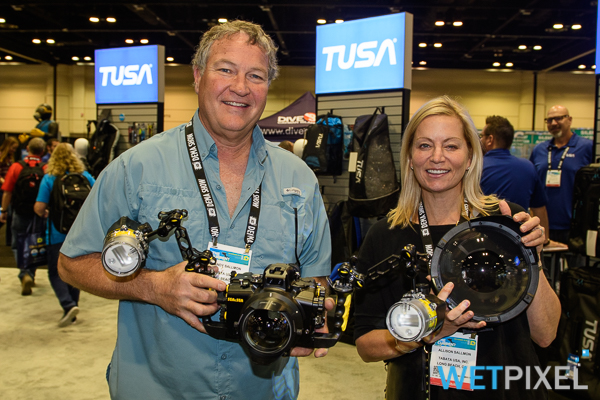
Sea & Sea
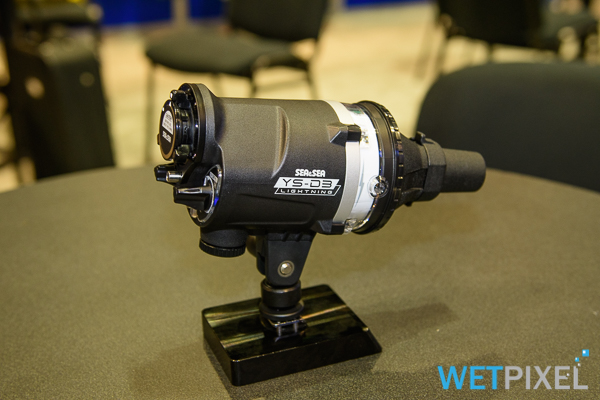
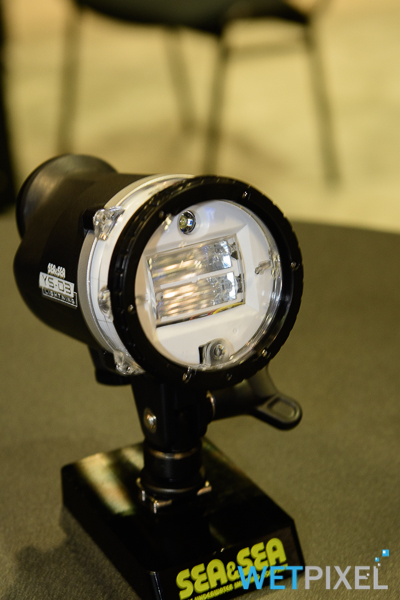
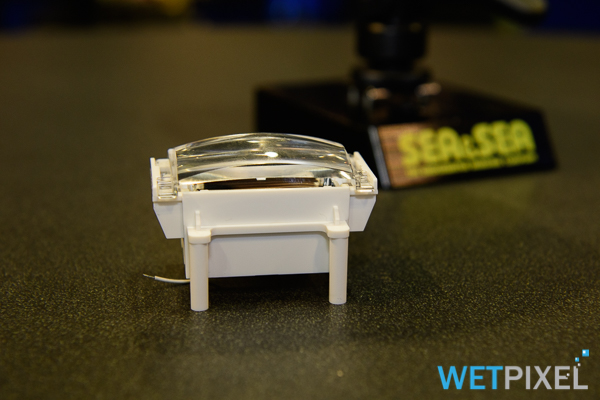
The YS-D3 has twin parallel straight flash tubes, combined with a unique aspherical toroidal lens that gives similar coverage and intensity to that of a circular flash tube. It has a guide number of 33, and a larger capacitor that offers continuous firing at a guide number of 16. At guide 22, recycle time is 0.6 seconds. When firing at full power, the strobe will provide audible and visual “ready to fire” signals when the capacitor is ready to fire at guide number 22.
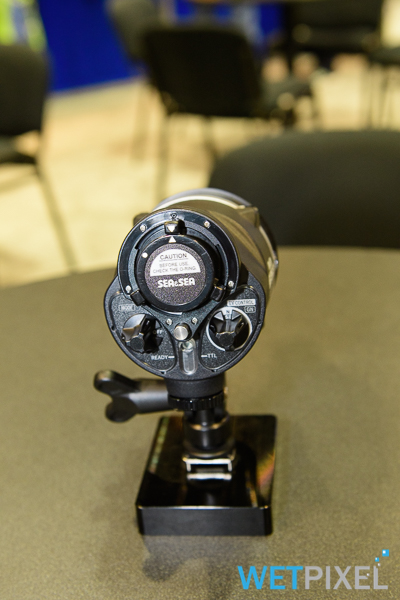
The beam angle is a native 90°, which can be increased to either 100° or 120° with the addition of diffusers. These reduce output by 1 or 2 stops, respectively.
The YS-D3 has an aluminum heat diffuser and a 100-lumen target light. Triggering is via Nikonos N5 or fiberoptic cable, and the strobe has multiple fiber ports to allow them to be daisy-chained sideways.
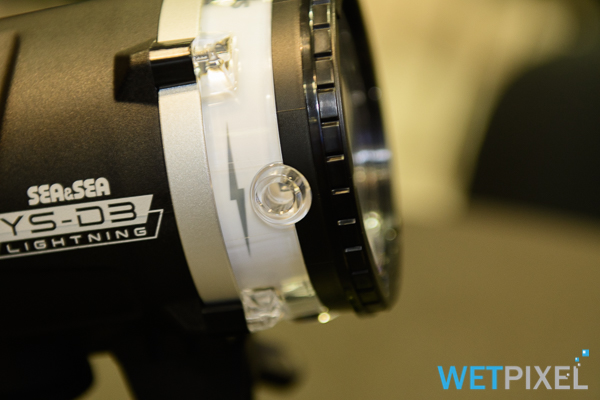
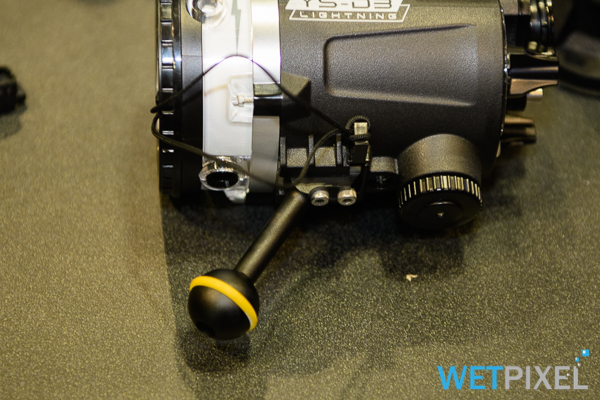
The controls are backlit and color-coded, with a redesigned knob to make them easier to use with thick gloves. Mounting options include YS and ball mounts.
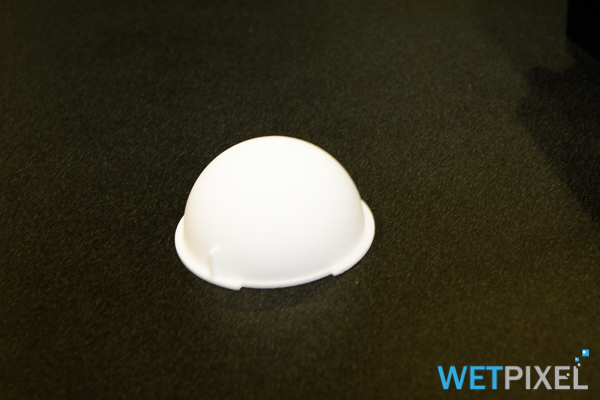
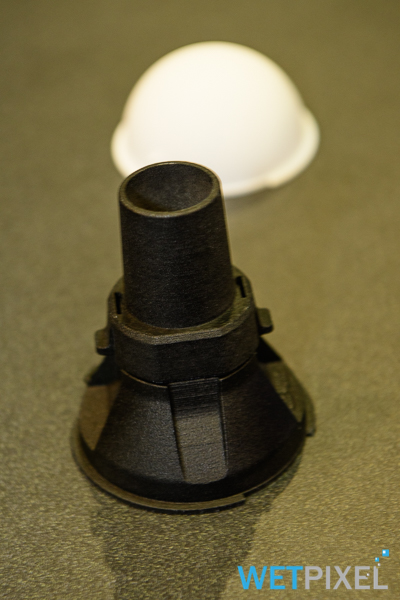
Sea&Sea will also be offering a dome diffuser, a snoot with an integrated prism to allow the target light to be used to aim it, and a 90° flash prism that adapts the fiber bulkhead to a simple 90° remote trigger.

The YS-D3 will be shipping from late December.

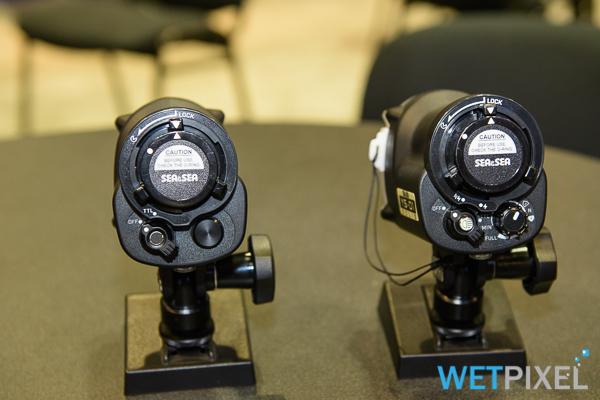
Andy also showed me the revised versions of the YS-01 and the YS-03 (now known as the YS-01 Solis and YS-03 Solis, respectively). These now offer a guide number of 20, and the YS-01 offers some manual TTL control of the output.

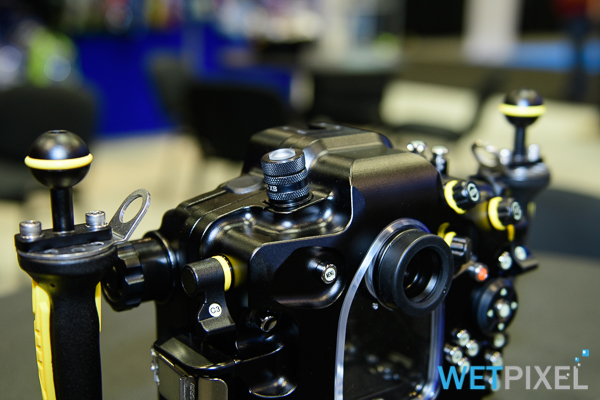
Moving to housings, we looked at the new housing for the Sony a7rIV. The MDXL-a7IV has redesigned grips with soft silicone inserts and is shipped with handle mounted 1” balls as standard. Buttons and controls all have yellow accents. Sea&Sea offers a version of the housing with the Leak Sentinel 6 vacuum monitor installed.
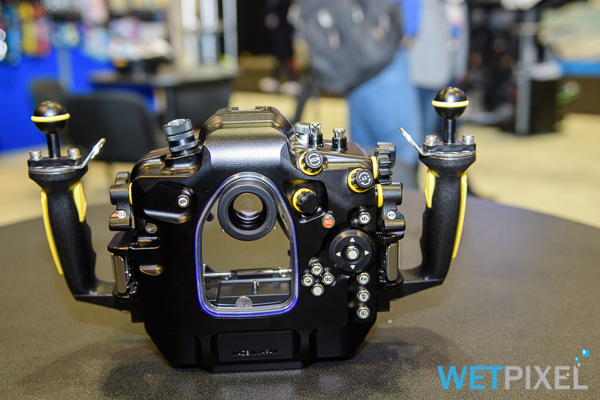

Sea&Sea offers a manual opto-electrical manual flash trigger or a TTL version, and there is a space under the camera tray that can either be used to accommodate an Anker IQ Powercore 10000 battery or to increase the housing’s buoyancy.

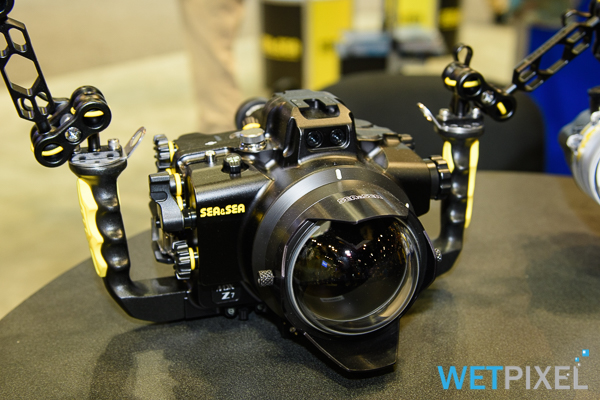
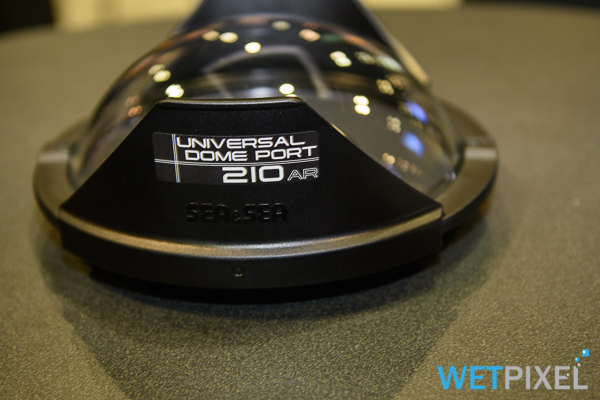
Andy mentioned that these changes would be implemented throughout the MDX housing range, and Sea&Sea USA is offering a 10% discount on the “old” versions to clear the older versions out.
The last new product was their new Universal Dome Port 210/201AR. These are made from an exciting new material called PLANEXT. It is a bioplastic that is environmentally friendly and produced primarily from plants.
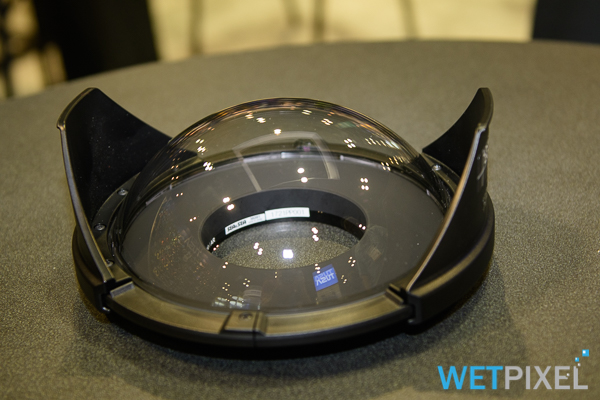
This is an amorphous bioplastic, this offers the same optical distortion as that of glass and allows for the use of an internal anti-reflective (AR) coating. The dome, produced via an injection molding process, enables the company to match the curvature of the dome to that of a concave meniscus lens. The AR coming is internal, which allows any scrapes to be buffed out without damage. Scratch resistance is as yet unknown, but the dome is significantly stronger than other acrylic ports. The dome itself can be replaced if damage to it occurs.
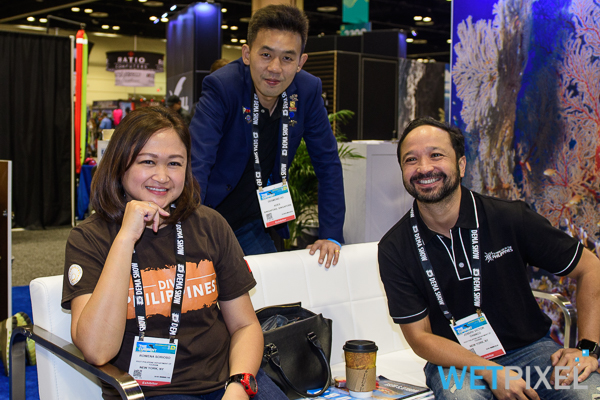
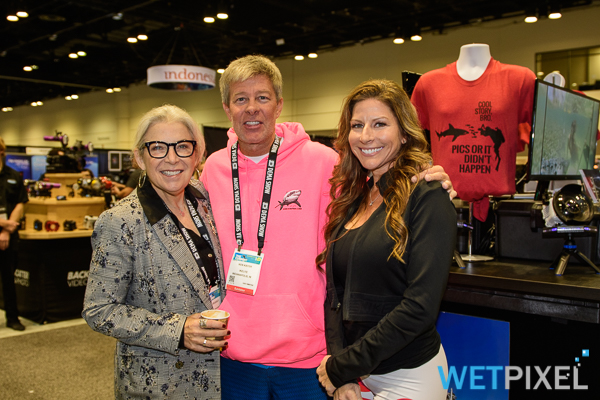
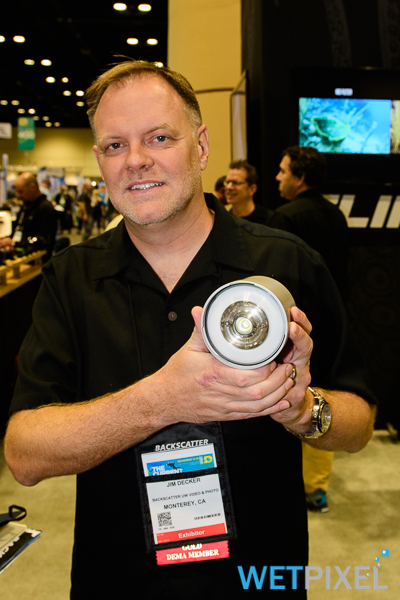
Backscatter
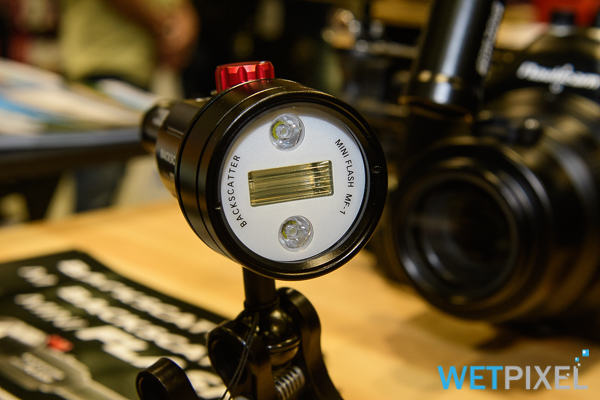
Jim Decker kindly took me through Backscatter’s new products. An exciting new product is their dedicated macro strobe.

Light and compact, it is explicitly designed for macro use. It has a guide number of 16 and is powered via a Nitecore NC1835HP 18650 battery that allows for a draw of 8A.
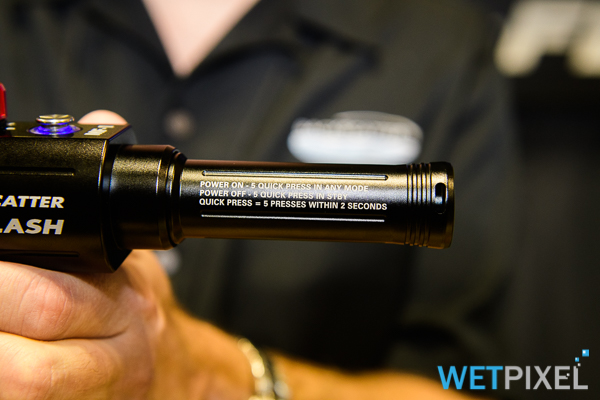
The battery compartment has three sealing O rings and even if flooded, is sealed from the flash itself.
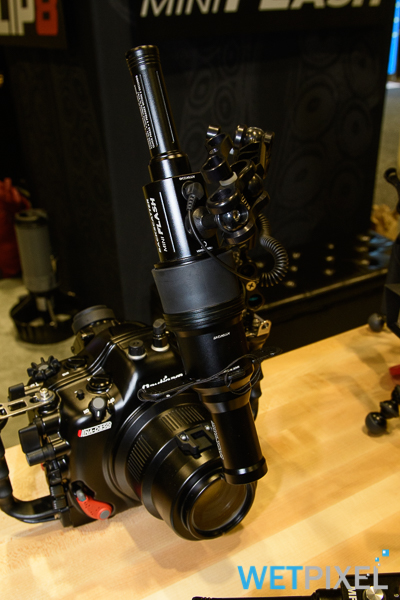
Available with or without its accessory snoot, the latter offers several cool features.
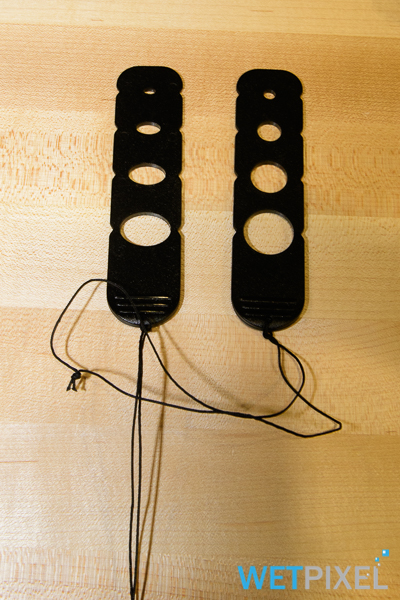
It has round or oval masks in several different sizes that allow the strobe to be angled towards the subject. When it is, the snoot can be rotated to optimize the flash pattern.
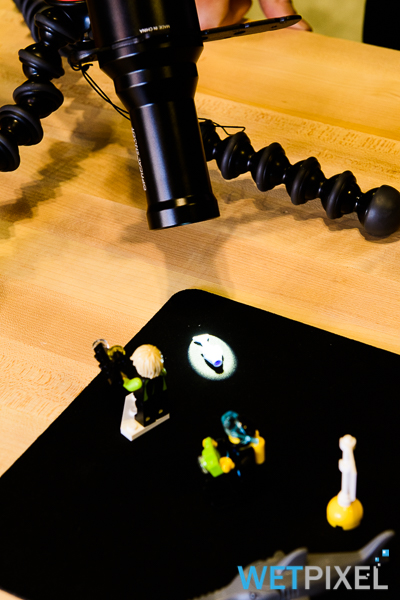
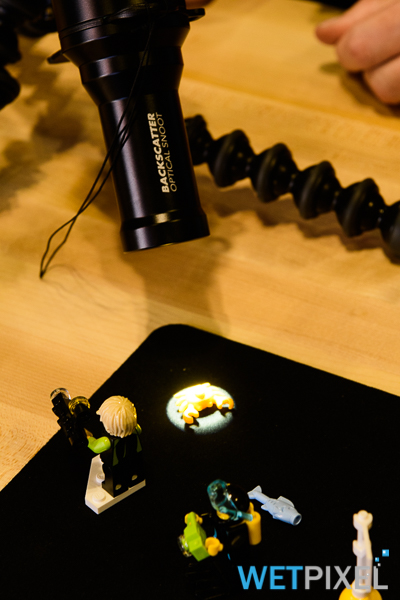
The strobe offers both a focusing light and a modeling flash to make it easy to aim. Flash output is adjustable over six steps, and the LED aiming light over 3.
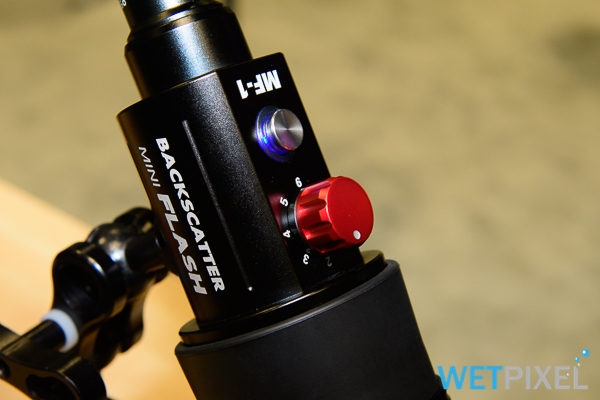
Triggered by fiber optic, the Mini Flash can be used with cameras that have preflash or without and will automatically “learn” from the first image taken. The control button illuminates to give feedback on the remaining battery charge.
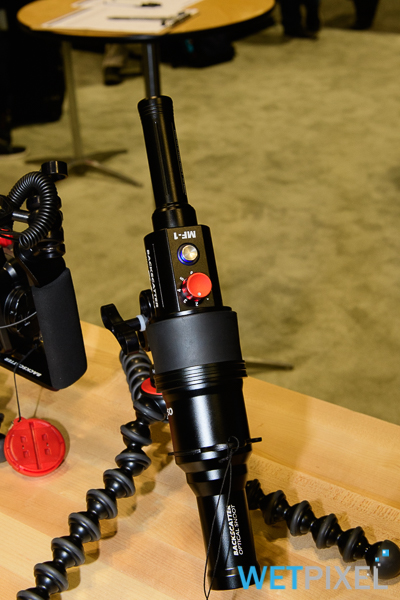
The Mini Flash will be shipping by mid-December, with the strobe alone priced at $399 and the optical snoot at $149. There is a combo pricing available, with the strobe and snoot combined at $499. Color filters will be shipping later in 2020.
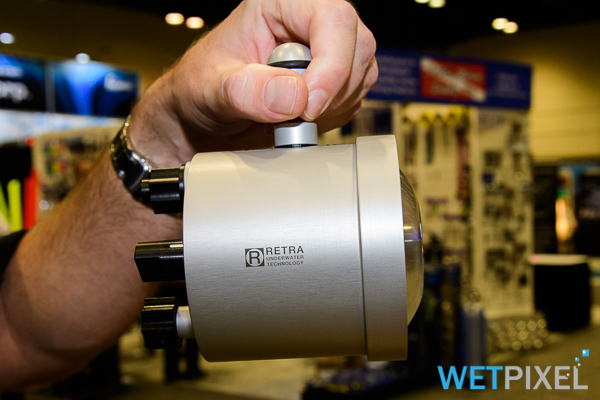
Jim then showed me the new Retra Pro strobe. Now scheduled to ship in early 2020, it has a circular flash tube with a 150 Ws output and is powered by 4 AA batteries, which offer 150 flashes at full power.
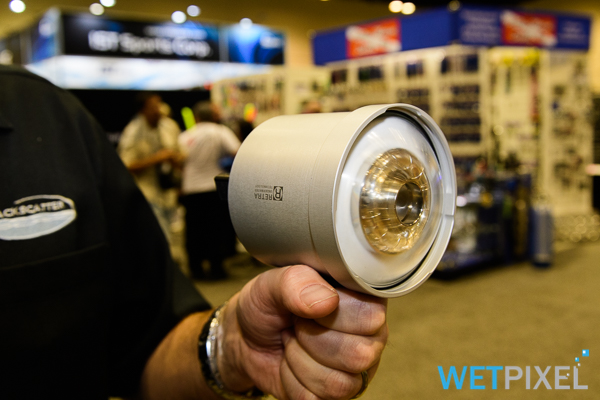
The flash has an integrated leak detector, and battery level indicator along with a 300 lumen LED aiming light. The associated Retra LSD snoot is compatible, although it does require an adaptor.
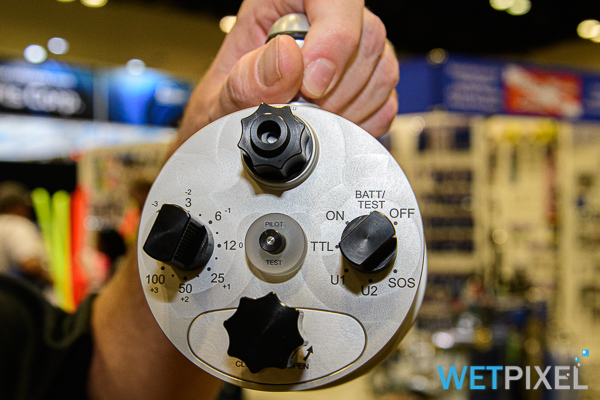
Programmable via a Bluetooth app, the flash has two custom function buttons that can be user-assigned. One of the default settings allows the strobe to be reduced to half power.
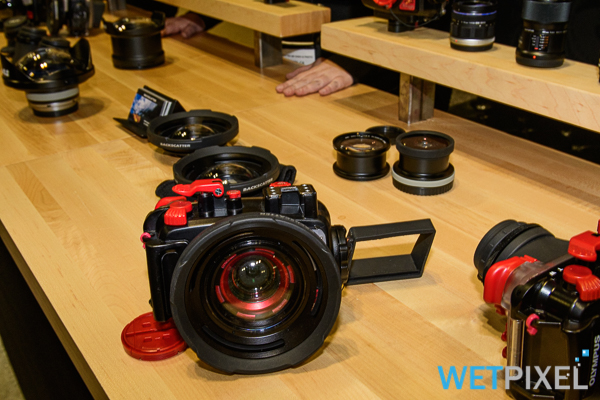
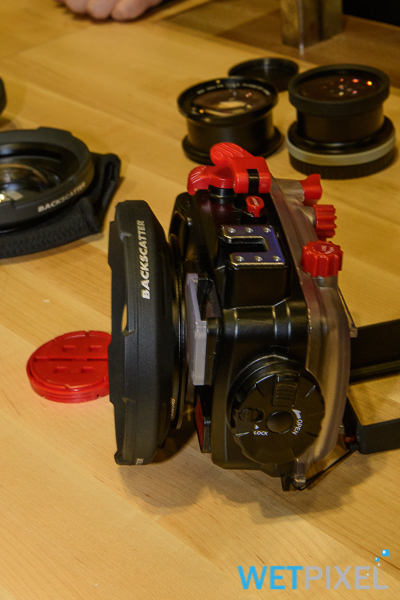
Lastly, Jim showed me the Backscatter Air Dome for the Olympus TG6 and PT-059 housing. The port restores the camera’s 81° field of view, increases sharpness and clarity, and offers full zoom through.
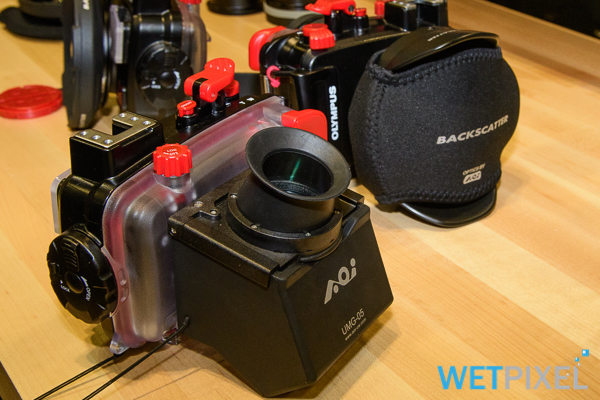
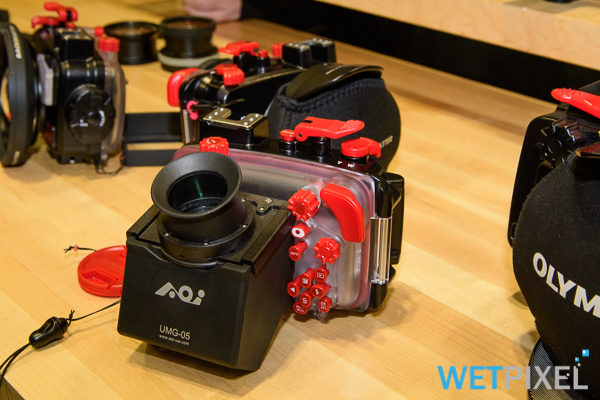
Lastly, Jim showed me a nifty 45° adaptor for use with compact cameras’ LCD screens. This looks like an excellent tool for macro photographers.
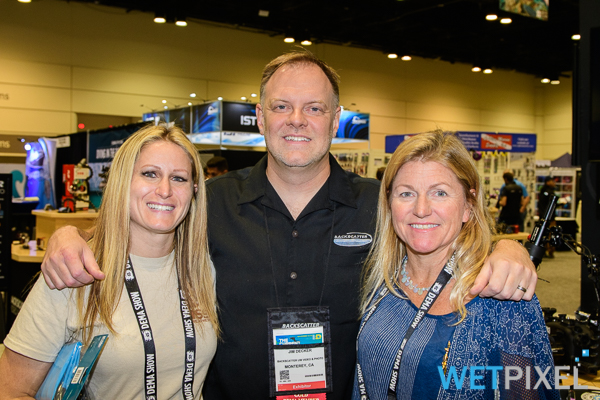
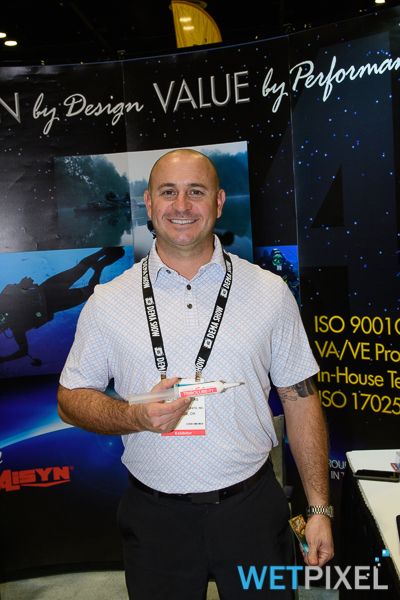
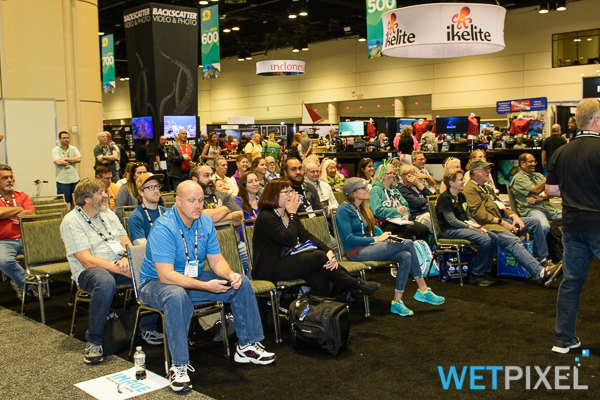
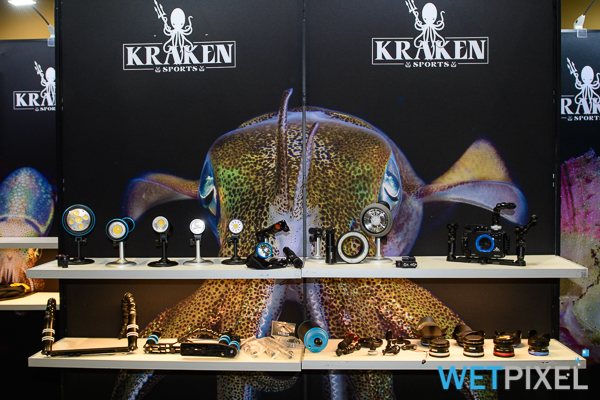
Kraken
As seems to be a theme at this year’s show, Kraken are presenting a strobe with a circular flash tube.
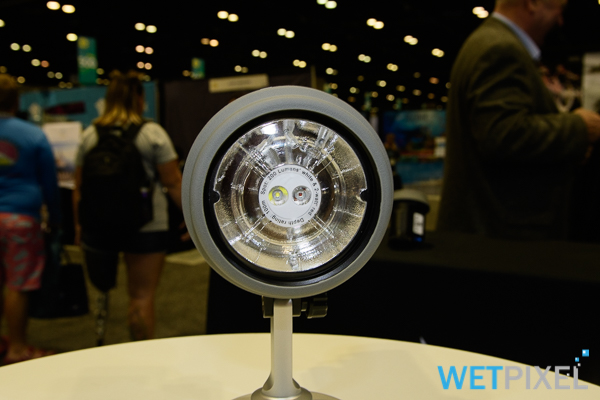
It offers a guide number of 24 at a color temperature of 5000°K. The strobe offers 90° coverage and 225 full-power flashes from its 14.8 V Li-ion battery pack.

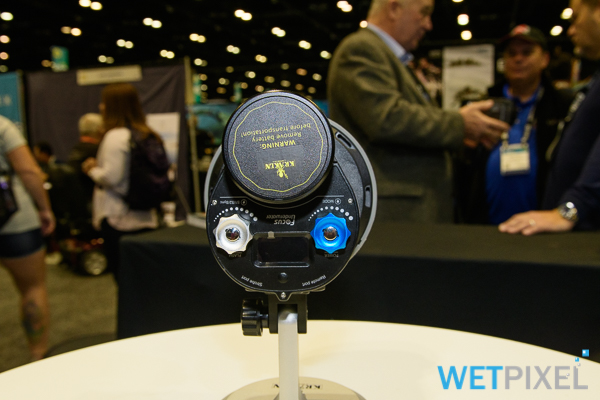
Triggered via fire optic, recycle time is 1.6 seconds between full flashes. It has an internal thread that allows the attachment of accessories. It will ship in early 2020.
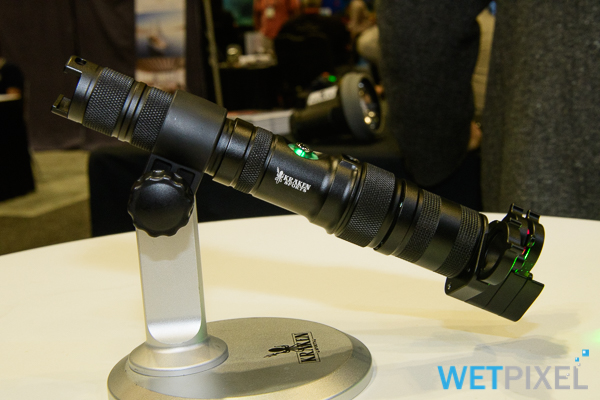
The next new product Doug Taleski of Kraken showed me was their Hydra 1000 Focus Edition light. This offers 1000 lumen output and has red, white, and strobe modes. The strobe function can be triggered via fiber optic and provides a brief flash at around 1500 lumen. The light’s output is adjusted through 3 levels, and the burn time is 85 minutes.
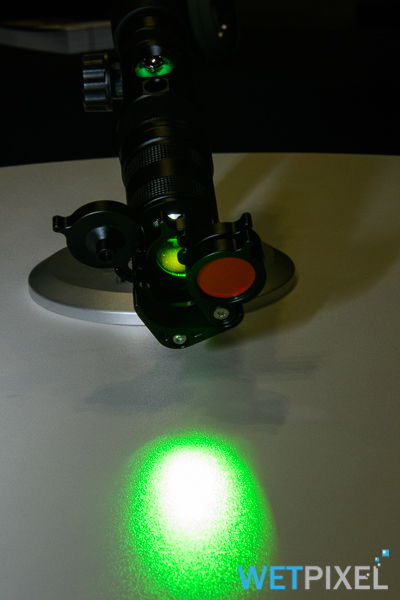

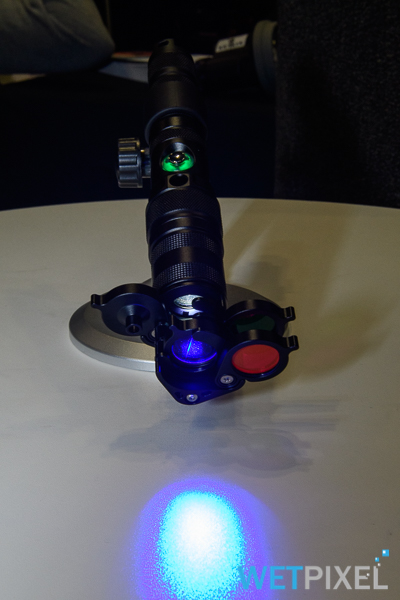
Kraken also offers a multicolor filter set and a snoot for the light.
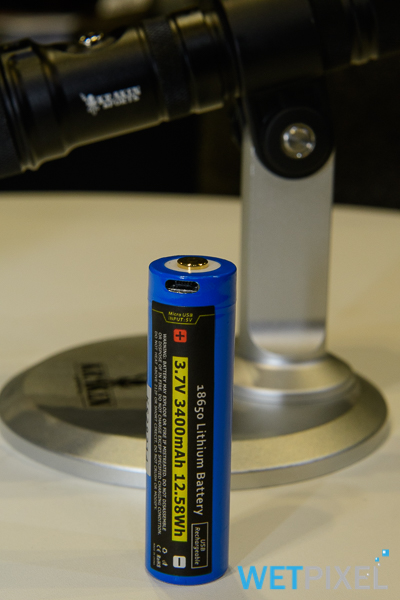
The light’s Li-ion battery has an integrated USB charging port.
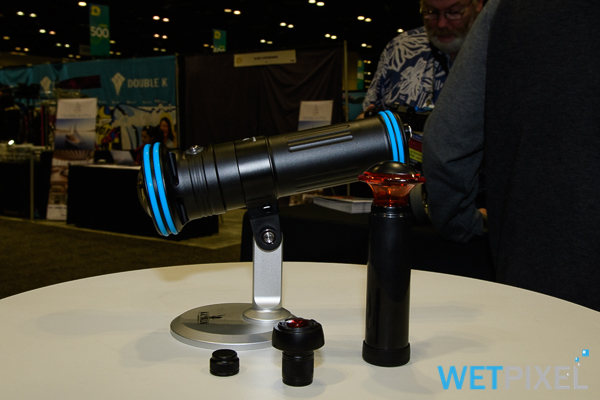
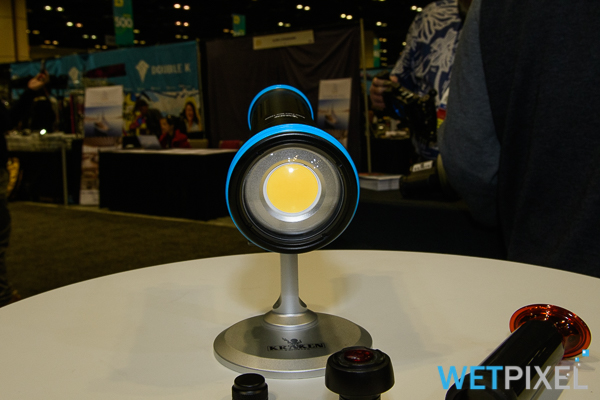
Kraken’s Solar Flare Mini 12000 is a video light with 12000-lumen output and a 120° beam angle in the water. Burn time is 65 minutes at full power, and there are six levels of output control, along with an SOS and strobe function.
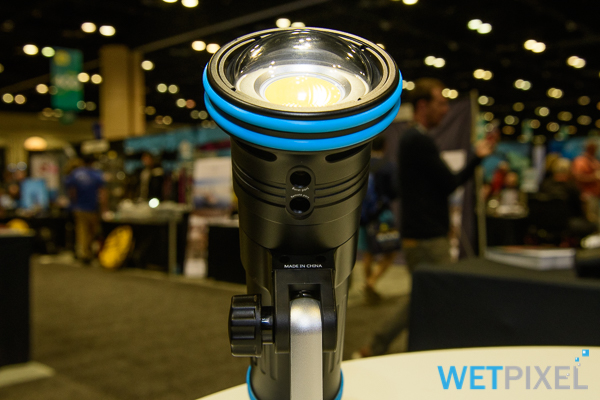
The latter offers around 15000-lumen output and is controlled via fiber optic. Also, a port allows for fiber-optic remote control of the light’s output.
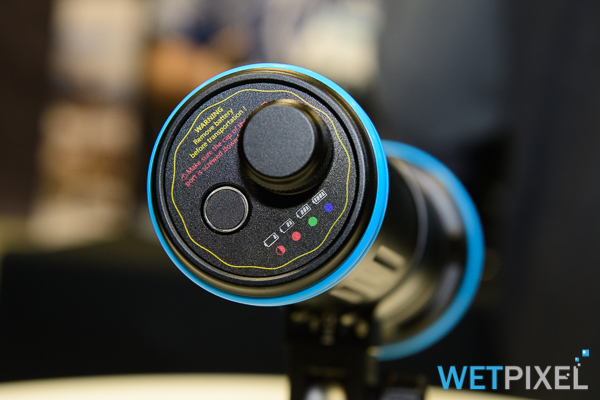
It features a built-in vacuum port.
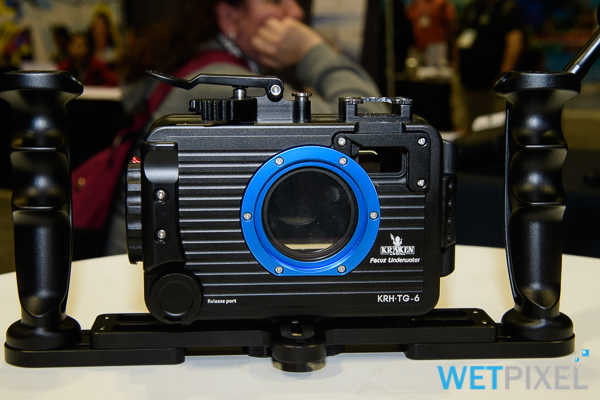
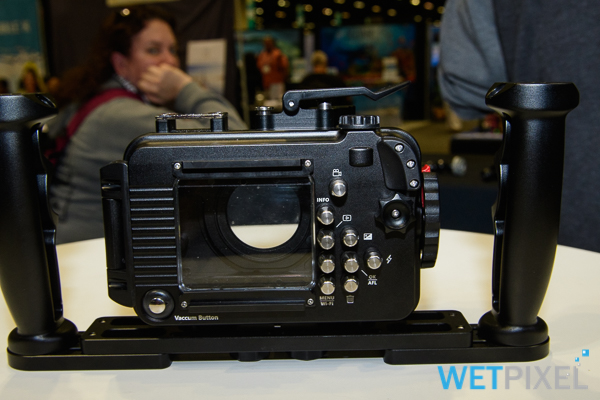
Doug then showed me the KRH TG-6 housing for the Olympus TG6 and TG5 cameras. This has a depth rating of 100m and is constructed of aluminum alloy. Doug demonstrated Kraken’s battery operated vacuum system:
Attached to the housing was the TR07/08 tray.
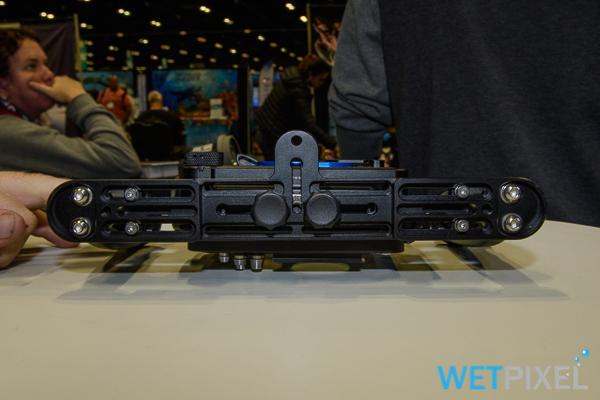
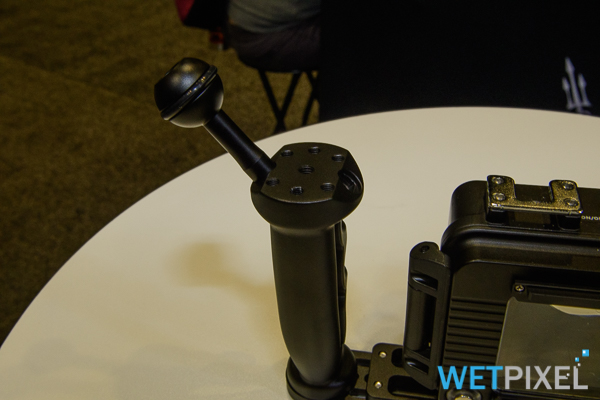
It has anodized pistol grips and multiple ball mounting options on top of each handle. The tray is adjustable for length, grip position, and housing mounting hole spacings.
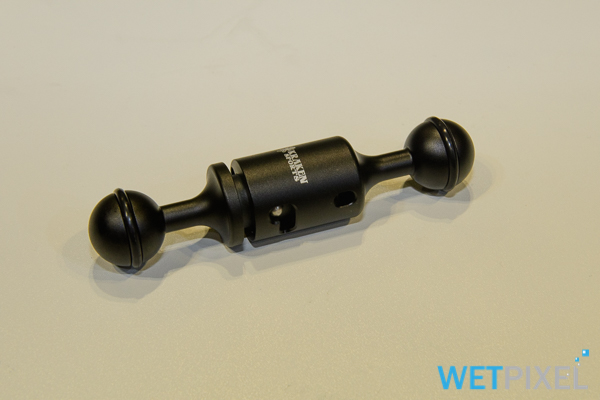

Another new item is a quick detachable 1’” ball connection.

Kraken is also building underwater optics. The KRL11 and KRL12 wet lenses offer a 90° field of view for 24mm equivalent focal length lenses and with M52 and M67 threaded fittings, respectively.
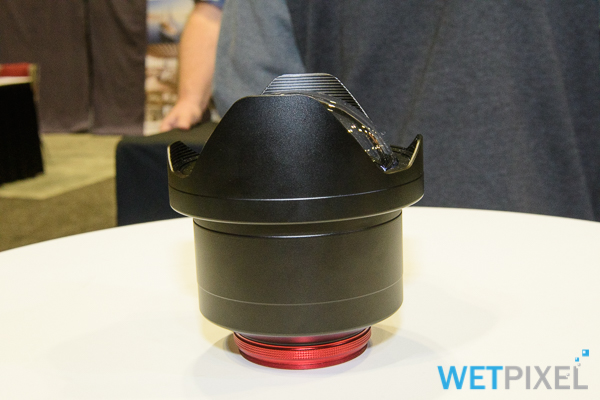
The KRL09S works with 60mm macro lenses on full frame cameras and converts their field of view to 154.8°. It has an integrated buoyancy collar. It has seven lens elements in 6 groups and has an M67 mount. It will be shipping in the first quarter of 2020.

Isotta
The Italian company with its signature red housings was present at the show with Simon Lorenz and Elisa Isotta on their booth.
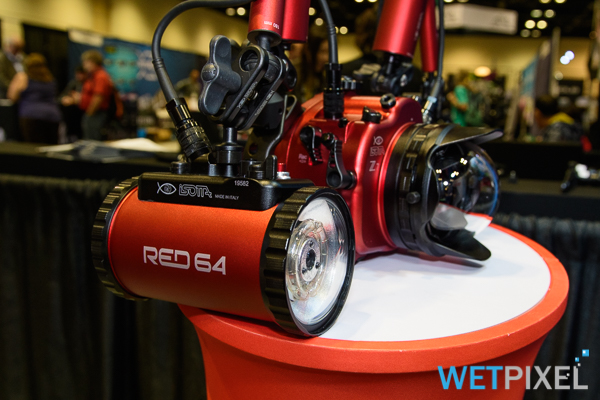
Their key new product is their Red 64 strobe. This has a guide number of 64 in air and 22 in water with a color temperature of 5400°K, and an output of 270 Ws.
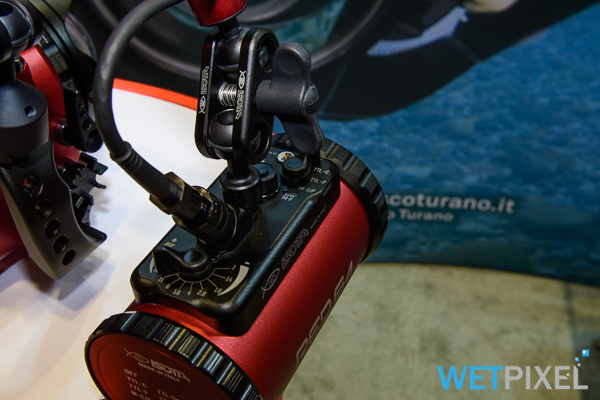
It can be fired via fiber or S6 connections and offers iTTL (eTTL to come), slave, manual, and manual with preflash cancellation.

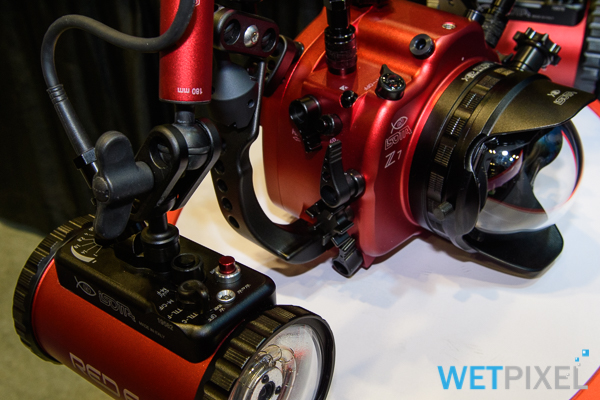
The target light has 300 lumen white and 190-lumen red modes. The strobes circular tubes offer a 130° beam angle. The recycle time is 3 secs between full-power flashes, although Simon pointed out that it will shoot nearly continuously at reduced power (f16).
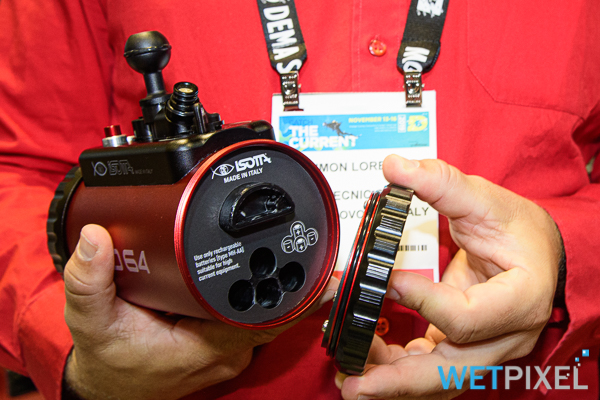
Isotta plans a range of accessories that will attach via a lockable bayonet. Isotta intends to ship the Red 64 in Spring 2020
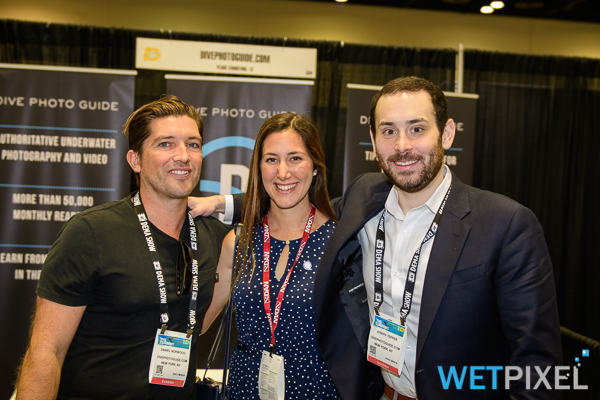
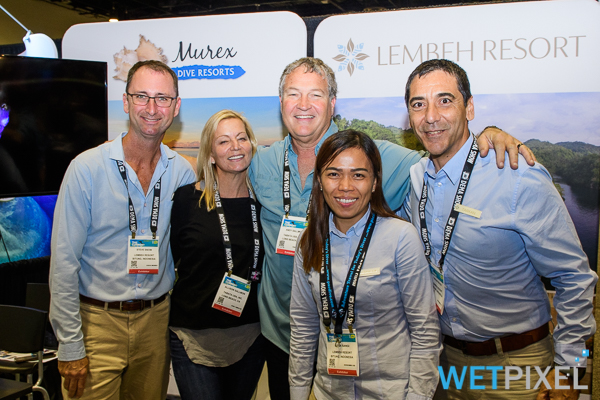
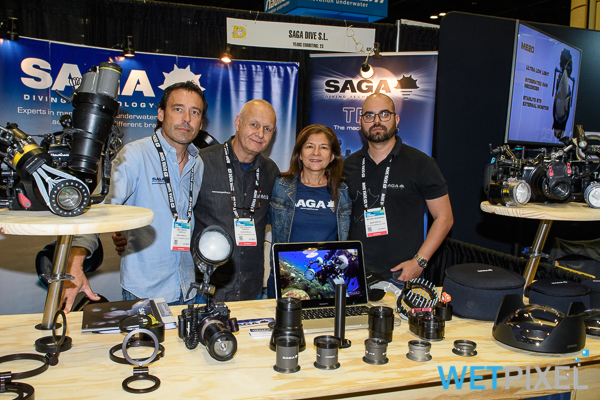
Saga
The Saga team had a booth at DEMA 2019 and they showed me through their range. The company is focusing on its existing range and has not released any new products for the show.
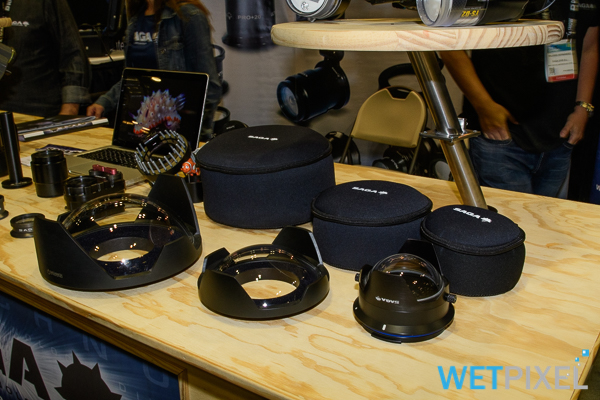
Saga produces 4”, 6” and 9” optical glass dome ports with removable shades and is shipped with neoprene covers and transport bags. Both the 6” and 9” domes ship with velvet internally to minimize reflections.
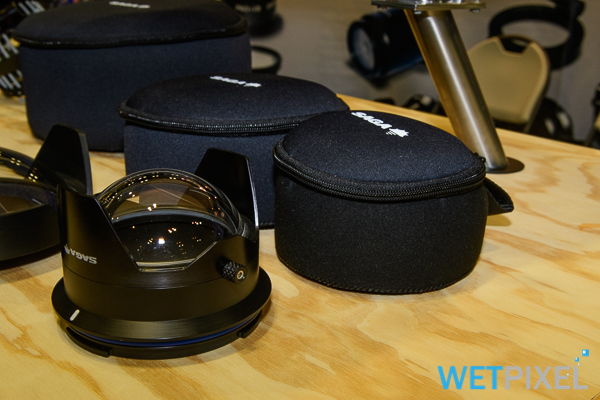
In the event of damage, the glass domes can be replaced by the factory. Saga can manufacture ports for any camera fitting.
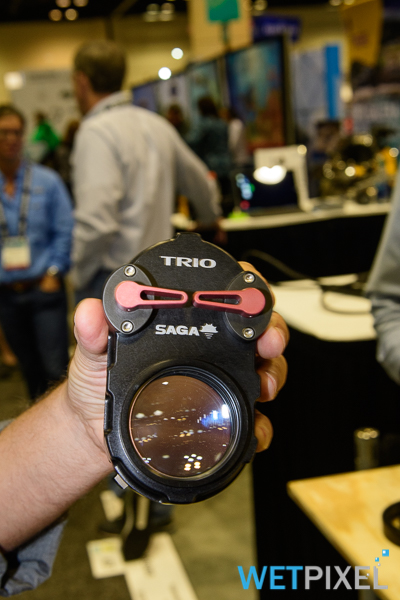
Saga also showed the Trio macro lens system.
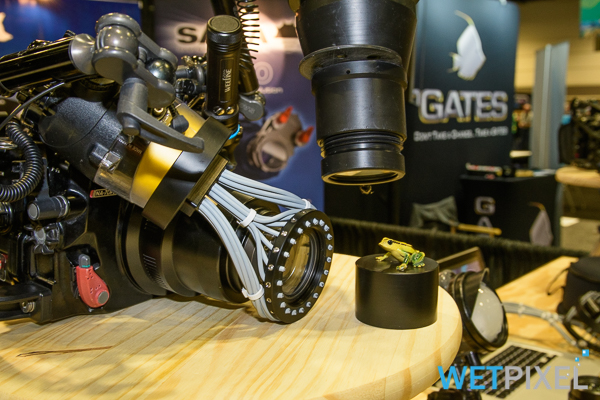
For some years, Saga has shown their fiber optic flash systems. These provide smooth even front lighting and can be attached to Saga or Nauticam close up lenses (although there is a unique fitting for use with the SMC-2). The fiber optic flash provides light to subjects between 2 to 12 cm away for the front of the lens and is compatible with any strobe.
Saga’s snoot offers six different integrated masks to vary beam size, which is illuminated by a fiber that is lit by the strobe’s target light. The snoot’s pattern can be focused by moving the lens’s element.
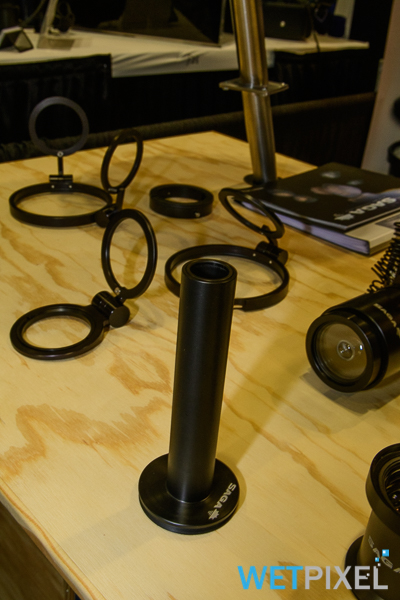
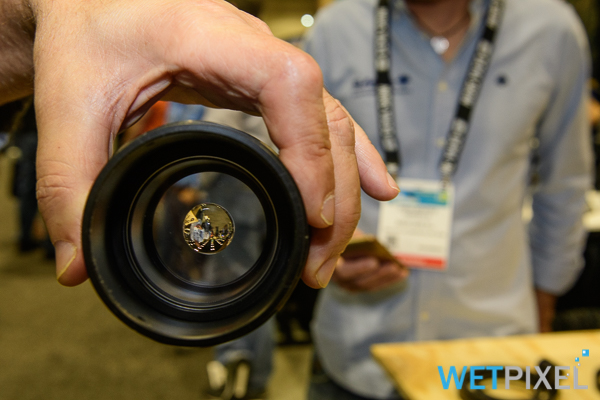
Two other accessories include the Magic Tube and Magic Ball. These offer creative effects and can be attached via an M67 thread. Lastly, Saga offer close up lenses in +5, +10, +15, +20, and +25 strengths with the last two only suitable for compact cameras.
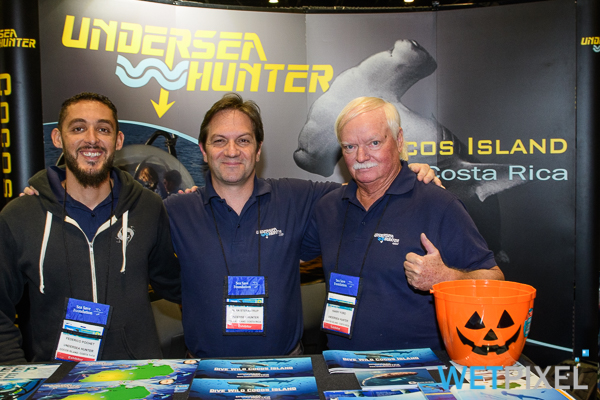

Inon
Takuya Tori of Inon was at the show, and although not exhibiting, was able to spend some time showing me his new products.
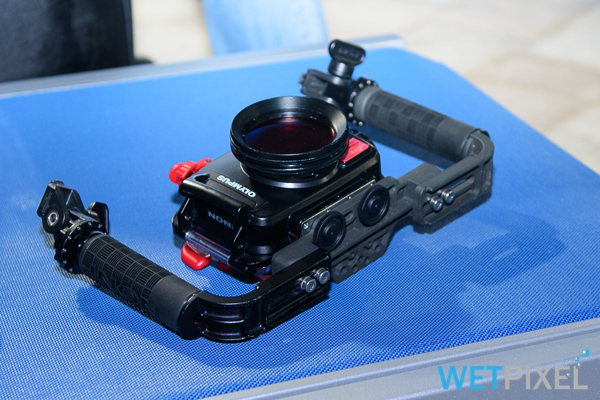

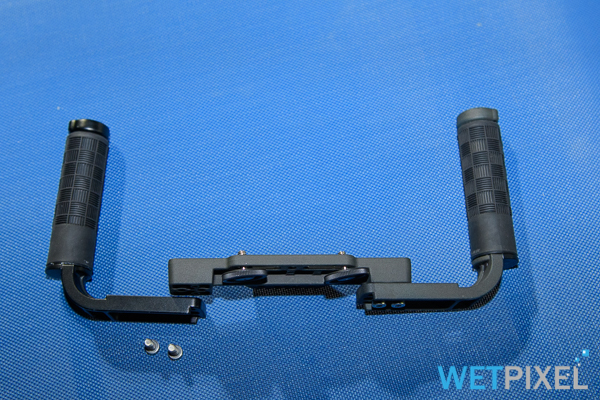
He showed me a prototype of the new Grip Base D5. This simple tray is very robust and can be fitted with the “D5 Holder,” which adds a second handle.
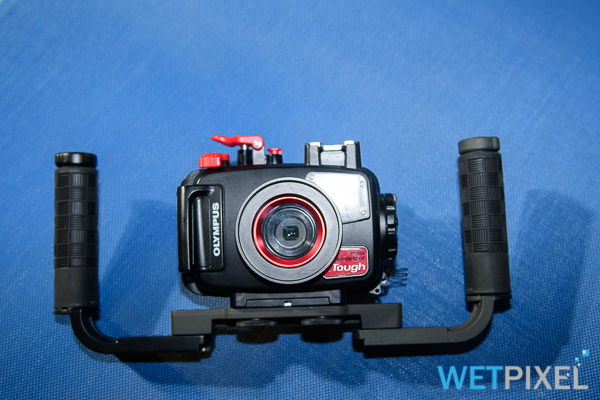
It is adjustable for length and the distance between the mounting screws.
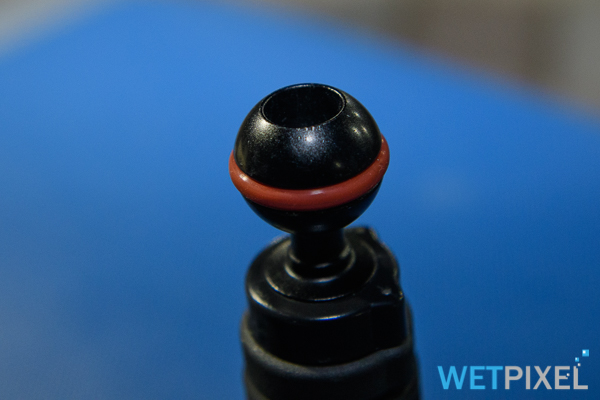
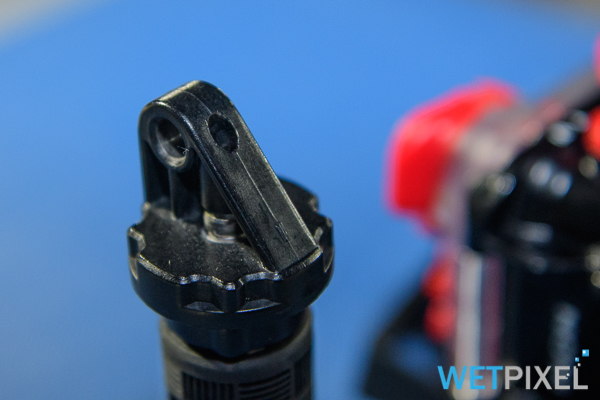
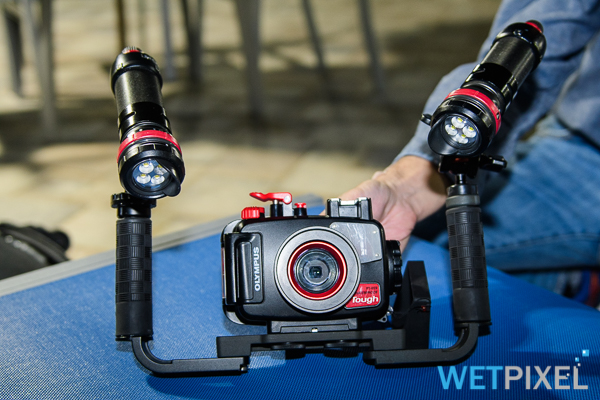
The handles have M6 mounting holes for the attachments of strobes or accessories. The tray is suitable for use with mirrorless SLR and compact cameras.
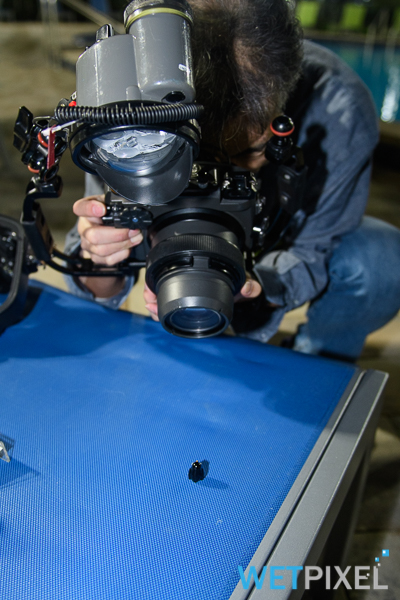
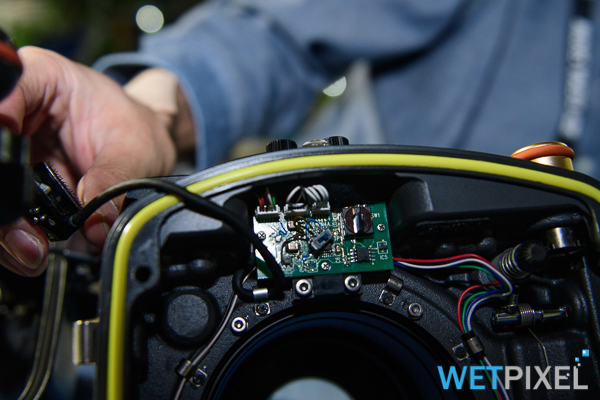
Takuya then showed me a prototype of their new TTL converter. Internally mounted, the convert offers several selectable manual or TTL options with Inon’s Z330, Z240, and D200 strobes. These are set via a rotary switch on the board itself.
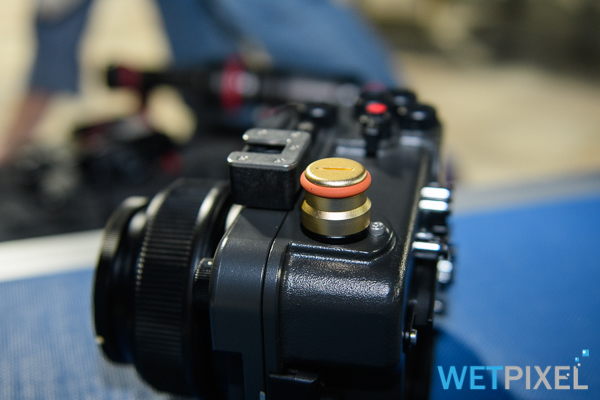
Lastly, he showed me their new vacuum system and leak detector circuit.
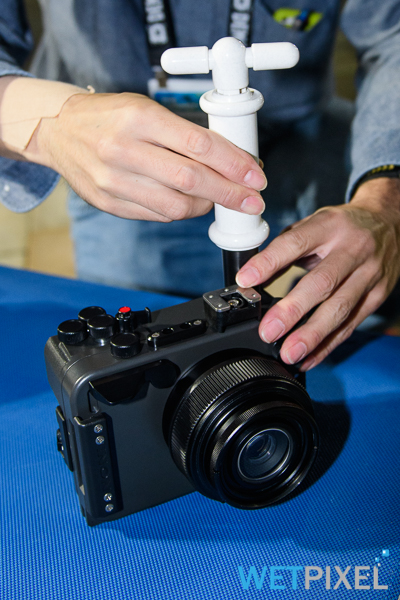
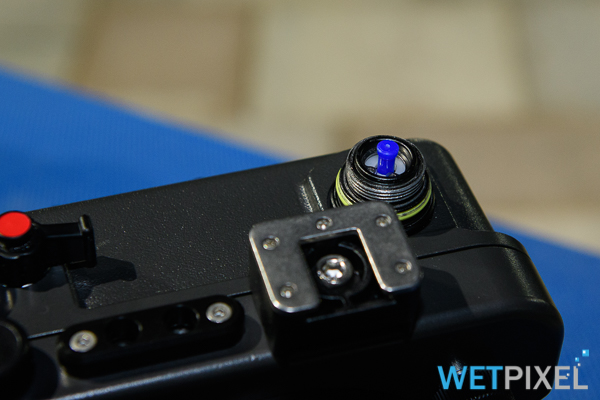
This is due to ship in early 2020 and undertakes an active test of the housing’s seal for 5 minutes after the vacuum is pumped before switching into leak detection mode. This will show up any error in O ring assembly and then monitor for leaks. Communication is via LED and sound, and the system performs a battery test before each test.
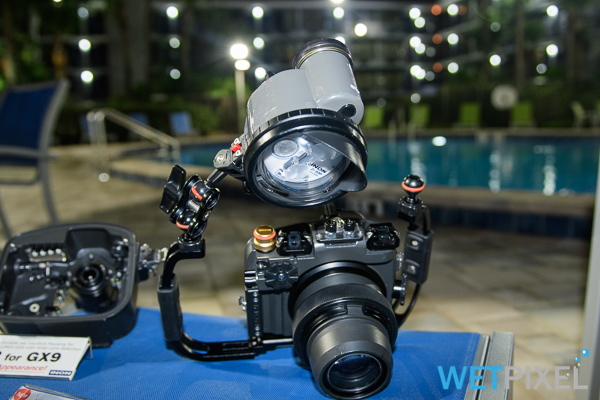
Day 1.
Day 2.
Wetpixel/DPG Party.
Days 3 and 4.